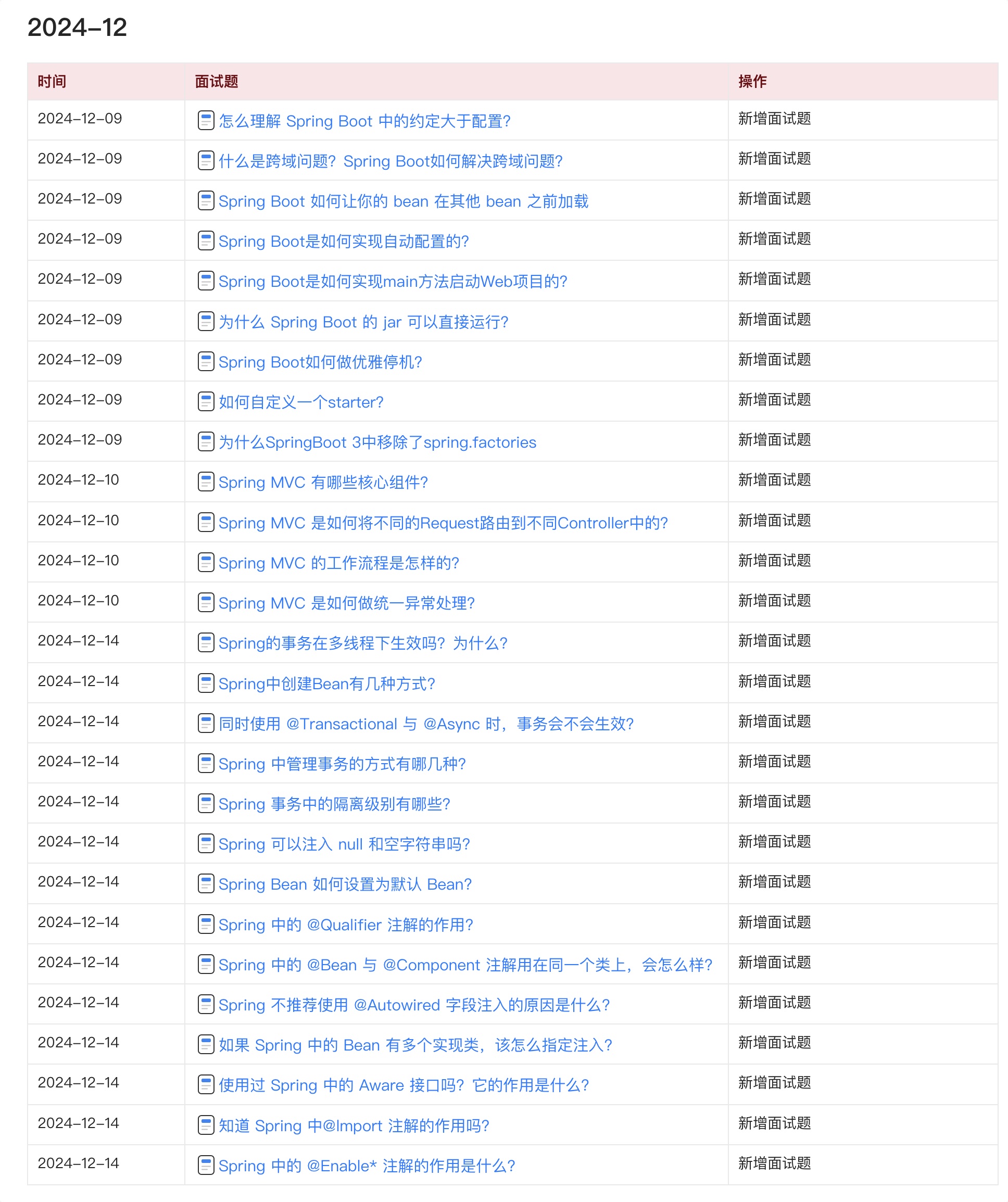KafkaProducer在通过send方法发送消息时,会首先将消息追加到一个名为 RecordAccumulator 的组件中。RecordAccumulator又名消息累加器,可以看成是KafkaProducer的一块消息缓冲区,主要用来按批次缓存消息,以便 Sender 线程可以批量发送,进而减少网络传输的资源消耗以提升性能。
// KafkaProducer.java
RecordAccumulator.RecordAppendResult result = accumulator.append(tp, timestamp, serializedKey, serializedValue, interceptCallback, remainingWaitMs);
本章,我就来讲解RecordAccumulator的内部结构,以及它是如何对消息进行按批次缓存处理的。
一、RecordAccumulator
我们先来看下RecordAccumulator的基本构造:
// RecordAccumulator.java
public final class RecordAccumulator {
private volatile boolean closed;
private final AtomicInteger flushesInProgress;
private final AtomicInteger appendsInProgress;
private final int batchSize;
private final CompressionType compression;
private final long lingerMs;
private final long retryBackoffMs;
// 缓冲池,里面是一个个ByteBuffer
private final BufferPool free;
private final Time time;
// 分区和一批次消息的映射Map
private final ConcurrentMap<TopicPartition, Deque<RecordBatch>> batches;
private final IncompleteRecordBatches incomplete;
private final Set<TopicPartition> muted;
private int drainIndex;
public RecordAccumulator(int batchSize, long totalSize, CompressionType compression,
long lingerMs, long retryBackoffMs, Metrics metrics, Time time) {
this.drainIndex = 0;
this.closed = false;
this.flushesInProgress = new AtomicInteger(0);
this.appendsInProgress = new AtomicInteger(0);
this.batchSize = batchSize;
this.compression = compression;
this.lingerMs = lingerMs;
this.retryBackoffMs = retryBackoffMs;
this.batches = new CopyOnWriteMap<>();
String metricGrpName = "producer-metrics";
// 创建内部的BufferPool
this.free = new BufferPool(totalSize, batchSize, metrics, time, metricGrpName);
this.incomplete = new IncompleteRecordBatches();
this.muted = new HashSet<>();
this.time = time;
registerMetrics(metrics, metricGrpName);
}
}
上述有两个比较重要的地方:
- BufferPool: 这是一块保存ByteBuffer的缓冲池,用来控制消息缓存的大小,消息的数据最终就是写到它的ByteBuffer中;
- CopyOnWriteMap: 这是一个”写时复制“的Map,保存分区和批次消息的映射关系:
<TopicPartition, Deque<RecordBatch>>,因为对分区的操作基本都是并发且读多写少的,所以适合”写时复制“算法。
1.1 BufferPool
我们先来看BufferPool,这是一块内存缓冲区,默认大小32MB,可以通过参数buffer.memory控制:
// BufferPool.java
public final class BufferPool {
// 缓冲池大小,默认32MB,通过参数buffer.memory控制
private final long totalMemory;
// batch大小,也就是一个ByteBuffer的大小,默认16KB,通过batch.size控制
private final int poolableSize;
private final ReentrantLock lock;
// 可用
private final Deque<ByteBuffer> free;
private final Deque<Condition> waiters;
private long availableMemory;
private final Metrics metrics;
private final Time time;
private final Sensor waitTime;
public BufferPool(long memory, int poolableSize, Metrics metrics, Time time, String metricGrpName) {
this.poolableSize = poolableSize;
this.lock = new ReentrantLock();
this.free = new ArrayDeque<ByteBuffer>();
this.waiters = new ArrayDeque<Condition>();
this.totalMemory = memory;
this.availableMemory = memory;
this.metrics = metrics;
this.time = time;
this.waitTime = this.metrics.sensor("bufferpool-wait-time");
MetricName metricName = metrics.metricName("bufferpool-wait-ratio",
metricGrpName,
"The fraction of time an appender waits for space allocation.");
this.waitTime.add(metricName, new Rate(TimeUnit.NANOSECONDS));
}
//...
}
对BufferPool的操作,本质就是对它内部的ByteBuffer的操作。BufferPool内部有一个Deque队列,缓存了可用的ByteBuffer,也就是缓存了一批内存空间,每个ByteBuffer都是16kb,即默认的batch大小。
Deque里ByteBuffer数量 * 16kb 就是已使用的缓存空间大小,availableMemory就是剩余可使用的缓存空间大小,最大32mb,每用掉一个batch,就要减去batchSize的大小,即132mb - 16kb。
另外,当调用方想要获取可用ByteBuffer,但是BufferPool可用空间又不足时,调用线程会阻塞,由参数max.block.ms控制:
// BufferPool.java
public ByteBuffer allocate(int size, long maxTimeToBlockMs) throws InterruptedException {
if (size > this.totalMemory)
throw new IllegalArgumentException("Attempt to allocate " + size
+ " bytes, but there is a hard limit of "
+ this.totalMemory
+ " on memory allocations.");
this.lock.lock();
try {
// 有可用空间,且要分配的ByteBuffer块大小就是poolableSize
if (size == poolableSize && !this.free.isEmpty())
return this.free.pollFirst();
// 计算剩余可用空间
int freeListSize = this.free.size() * this.poolableSize;
if (this.availableMemory + freeListSize >= size) {
freeUp(size);
this.availableMemory -= size;
lock.unlock();
return ByteBuffer.allocate(size);
} else {
//...
}
} finally {
if (lock.isHeldByCurrentThread())
lock.unlock();
}
}
1.2 RecordBatch
RecordAccumulator会按照分区,将同一个分区的消息打包成一个个 RecordBatch ,每一个RecordBatch可能包含多条消息,这些消息在内存里是按照一定的格式紧凑拼接的:
// RecordBatch.java
public final class RecordBatch {
final long createdMs;
final TopicPartition topicPartition;
final ProduceRequestResult produceFuture;
private final List<Thunk> thunks = new ArrayList<>();
// 内存消息构建器,这个很重要,最终是它将消息拼接
private final MemoryRecordsBuilder recordsBuilder;
volatile int attempts;
int recordCount;
int maxRecordSize;
long drainedMs;
long lastAttemptMs;
long lastAppendTime;
private String expiryErrorMessage;
private AtomicBoolean completed;
private boolean retry;
public RecordBatch(TopicPartition tp, MemoryRecordsBuilder recordsBuilder, long now) {
this.createdMs = now;
this.lastAttemptMs = now;
this.recordsBuilder = recordsBuilder;
this.topicPartition = tp;
this.lastAppendTime = createdMs;
this.produceFuture = new ProduceRequestResult(topicPartition);
this.completed = new AtomicBoolean();
}
// 在内存里拼接消息
public FutureRecordMetadata tryAppend(long timestamp, byte[] key, byte[] value,
Callback callback, long now) {
// 空间不足
if (!recordsBuilder.hasRoomFor(key, value)) {
return null;
} else {
// 通过MemoryRecordsBuilder,追加消息到内存
long checksum = this.recordsBuilder.append(timestamp, key, value);
this.maxRecordSize = Math.max(this.maxRecordSize, Record.recordSize(key, value));
this.lastAppendTime = now;
FutureRecordMetadata future = new FutureRecordMetadata(this.produceFuture, this.recordCount, timestamp, checksum, key == null ? -1 : key.length, value == null ? -1 : value.length);
if (callback != null)
thunks.add(new Thunk(callback, future));
this.recordCount++;
return future;
}
}
//...
}
可以看到,消息追加的操作最终是通过 MemoryRecordsBuilder 完成的,每一条消息都是以crc|magic|attribute|timestamp...这样的格式最终追加到分配到ByteBuffer中:

// MemoryRecordsBuilder.java
public long append(long timestamp, byte[] key, byte[] value) {
return appendWithOffset(lastOffset < 0 ? baseOffset : lastOffset + 1, timestamp, key, value);
}
public long appendWithOffset(long offset, long timestamp, byte[] key, byte[] value) {
try {
if (lastOffset >= 0 && offset <= lastOffset)
throw new IllegalArgumentException(String.format("Illegal offset %s following previous offset %s (Offsets must increase monotonically).", offset, lastOffset));
int size = Record.recordSize(magic, key, value);
// LogEntry日志项,appendStream就是由ByteBuffer转化而来
LogEntry.writeHeader(appendStream, toInnerOffset(offset), size);
if (timestampType == TimestampType.LOG_APPEND_TIME)
timestamp = logAppendTime;
long crc = Record.write(appendStream, magic, timestamp, key, value, CompressionType.NONE, timestampType);
recordWritten(offset, timestamp, size + Records.LOG_OVERHEAD);
return crc;
} catch (IOException e) {
throw new KafkaException("I/O exception when writing to the append stream, closing", e);
}
}
二、消息缓存
了解了RecordAccumulator内部的几个重要组件,我们再来看消息缓存的整体流程。
KafkaProducer发送消息时,内部调用了RecordAccumulator.append方法,消息会被追加到 RecordAccumulator 内部的某个双端队列( Deque )中,并且多个消息会被打包成一个批次——RecordBatch:

2.1 整体流程
消息追加的整体流程是通过RecordAccumulator.append()方法完成的:
- 首先,根据消息的分区,从CopyOnWriteMap中找到一个已有的或新建一个
Deque<RecordBatch>; - 每个RecordBatch可用的缓存块默认大小为16KB,如果消息超过这个大小,就单独作为一个自定义大小的batch入队;
- 如果消息没有超过16kb,就将多个消息打包成一个batch入队。
// RecordAccumulator.java
public RecordAppendResult append(TopicPartition tp, long timestamp, byte[] key, byte[] value,
Callback callback, long maxTimeToBlock) throws InterruptedException {
appendsInProgress.incrementAndGet();
try {
// 1.根据分区,从内部的CopyOnWriteMap获取或新建一个双端队列
Deque<RecordBatch> dq = getOrCreateDeque(tp);
synchronized (dq) {
if (closed)
throw new IllegalStateException("Cannot send after the producer is closed.");
// 尝试往Dequeue中追加消息,不存在可用Batch或Batch可用空间不足会追加失败
RecordAppendResult appendResult = tryAppend(timestamp, key, value, callback, dq);
if (appendResult != null)
// 追加成功
return appendResult;
}
// 2.执行到这里,说明Dequeue队尾没有可用batch,或有batch但可用空间不足
// 计算待新建的batch大小
int size = Math.max(this.batchSize, Records.LOG_OVERHEAD + Record.recordSize(key, value));
log.trace("Allocating a new {} byte message buffer for topic {} partition {}", size, tp.topic(), tp.partition());
// 从BufferPool中获取一块可用的ByteBuffer,如果空间不足会阻塞
ByteBuffer buffer = free.allocate(size, maxTimeToBlock);
synchronized (dq) {
if (closed)
throw new IllegalStateException("Cannot send after the producer is closed.");
// 再次追加消息,不存在可用Batch会追加失败
RecordAppendResult appendResult = tryAppend(timestamp, key, value, callback, dq);
// 这里用了一个双重锁检查,主要针对多个线程同时获取多个ByteBuffer的情况进行处理
if (appendResult != null) {
// 归还buffer
free.deallocate(buffer);
return appendResult;
}
// 3.执行到这里,说明是首次往Deque存入batch
// MemoryRecordsBuilder负责真正的消息往ByteBuffer写入
MemoryRecordsBuilder recordsBuilder = MemoryRecords.builder(buffer, compression, TimestampType.CREATE_TIME, this.batchSize);
// 创建一个RecordBatch并入队,持有MemoryRecordsBuilder
RecordBatch batch = new RecordBatch(tp, recordsBuilder, time.milliseconds());
FutureRecordMetadata future = Utils.notNull(batch.tryAppend(timestamp, key, value, callback, time.milliseconds()));
dq.addLast(batch);
incomplete.add(batch);
return new RecordAppendResult(future, dq.size() > 1 || batch.isFull(), true);
}
} finally {
appendsInProgress.decrementAndGet();
}
}
// RecordAccumulator.java
// 新建或获取已存在的Deque<RecordBatch>
private Deque<RecordBatch> getOrCreateDeque(TopicPartition tp) {
// 从内部的CopyOnWriteMap获取
Deque<RecordBatch> d = this.batches.get(tp);
if (d != null)
return d;
// 如果不存在,则新建一个
d = new ArrayDeque<>();
Deque<RecordBatch> previous = this.batches.putIfAbsent(tp, d);
if (previous == null)
return d;
else
return previous;
}
// 尝试向Deque<RecordBatch>中追加消息
private RecordAppendResult tryAppend(long timestamp, byte[] key, byte[] value, Callback callback, Deque<RecordBatch> deque) {
// 拿出队尾的Batch
RecordBatch last = deque.peekLast();
if (last != null) {
FutureRecordMetadata future = last.tryAppend(timestamp, key, value, callback, time.milliseconds());
if (future == null)
last.close();
else
return new RecordAppendResult(future, deque.size() > 1 || last.isFull(), false);
}
return null;
}
一个RecordBatch内部持有一个ByteBuffer,里面可能存放好几条消息,可以通过batch.size参数可以控制batch的大小,默16KB。所以在实际生产环境中,以下参数都是必须经过调优的:
- request.max.size: 每条消息的最大大小,默认1MB;
- batch.size: 每个RecordBatch的大小,默认16KB;
- buffer.memory: 消息缓冲区的大小,默认32MB。
你必须要根据自己实际发送的消息大小来设置request.max.size和batch.size,否则如果消息大小频繁超过了batch.sizse的话,那就是一条消息一个批次,起不到提升吞吐量的效果。
三、总结
本章,我对RecordAccumulator的内存结构和消息缓存的底层原理进行了讲解。这里总结一下:
- RecordAccumulator会按照分区维度将消息缓存,底层采用了一个CopyOnWriteMap来保存这种映射关系;
- RecordAccumulator会将多个消息打成一个RecordBatch,目的是后续Sender线程可以按批次发送消息,减少网络传输的开销,提升整体吞吐量;
- RecordAccumulator内部有一个缓冲池BufferPool,缓冲池里面划分了一块块固定大小的ByteBuffer,每一个RecordBatch都会使用一个ByteBuffer来写入多条消息,如果某条消息的大小超过单个ByteBuffer的默认大小(16KB),就会自定义一块ByteBuffer;
- 消息最终是以一种紧凑的二进制格式
offset | size | crc | magic | attibutes | timestamp | key size | key | value size | value写入到底层的ByteBuffer里去。
Java 面试宝典是大明哥全力打造的 Java 精品面试题,它是一份靠谱、强大、详细、经典的 Java 后端面试宝典。它不仅仅只是一道道面试题,而是一套完整的 Java 知识体系,一套你 Java 知识点的扫盲贴。
它的内容包括:
- 大厂真题:Java 面试宝典里面的题目都是最近几年的高频的大厂面试真题。
- 原创内容:Java 面试宝典内容全部都是大明哥原创,内容全面且通俗易懂,回答部分可以直接作为面试回答内容。
- 持续更新:一次购买,永久有效。大明哥会持续更新 3+ 年,累计更新 1000+,宝典会不断迭代更新,保证最新、最全面。
- 覆盖全面:本宝典累计更新 1000+,从 Java 入门到 Java 架构的高频面试题,实现 360° 全覆盖。
- 不止面试:内容包含面试题解析、内容详解、知识扩展,它不仅仅只是一份面试题,更是一套完整的 Java 知识体系。
- 宝典详情:https://www.yuque.com/chenssy/sike-java/xvlo920axlp7sf4k
- 宝典总览:https://www.yuque.com/chenssy/sike-java/yogsehzntzgp4ly1
- 宝典进展:https://www.yuque.com/chenssy/sike-java/en9ned7loo47z5aw
目前 Java 面试宝典累计更新 400+ 道,总字数 42w+。大明哥还在持续更新中,下图是大明哥在 2024-12 月份的更新情况:

想了解详情的小伙伴,扫描下面二维码加大明哥微信【daming091】咨询

同时,大明哥也整理一套目前市面最常见的热点面试题。微信搜[大明哥聊 Java]或扫描下方二维码关注大明哥的原创公众号[大明哥聊 Java] ,回复【面试题】 即可免费领取。

